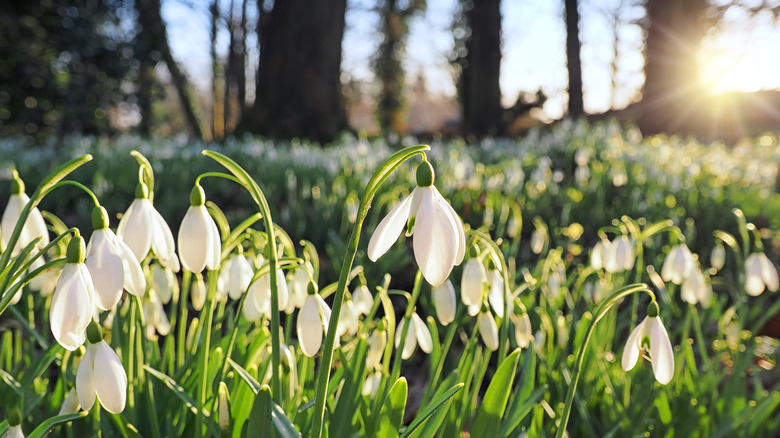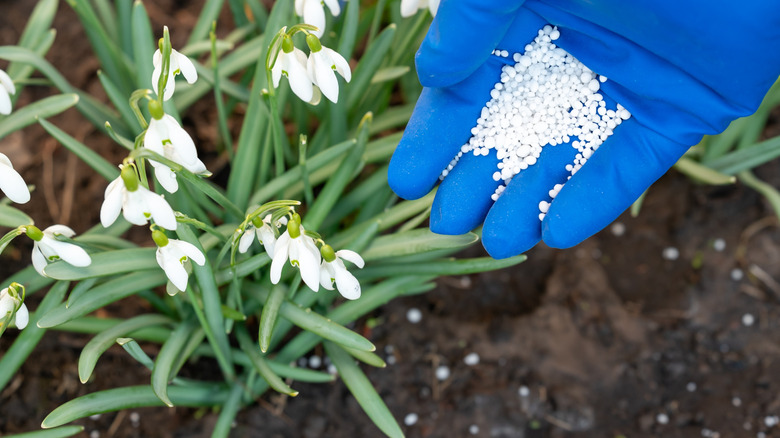The Essential Gardening Tip That'll Ensure Healthier Snowdrop Flowers Next Season
Snowdrops (Galanthus spp.) may be your yard's earliest bloomers, opening their pendulous flowers at winter's end in many parts of the United States. The frosty white blossoms resemble bells when closed and snowflakes when opened. Most types of snowdrops thrive in USDA Hardiness zones 4 through 7, but some varieties are hardy as far north as zone 2. Like their amaryllis and daffodil cousins, these perennials emerge from bulbs after an essential chilling period called stratification. Unfortunately, the beautiful blooms won't last forever, but you should still care for spring-blooming bulbs like these after the flowers die. Helping the bulbs store nutrients is crucial for the next year's flower production, so treat the foliage with care! Though the leaves may start to appear ragged after the current year's flowers bloom, they're quietly photosynthesizing and still delivering nutrition to the bulbs.
Some gardeners might be eager to remove feeble-looking snowdrop leaves. Others let the foliage wither away since leaves grow for some time after flowering concludes. While laziness isn't often rewarded in the garden, patience is a virtue when it comes to snowdrops. By allowing the foliage to expire at its own pace, you're less likely to interrupt photosynthesis.
Leave the foliage and focus on nourishing the bulbs
Allowing the leaves to decay naturally is the best move, but if you still choose to cut off your snowdrops' leaves, do so when you're certain both the flowers and foliage have had their last hurrah. Yellowing foliage is a sign that it's about the right time. This typically happens in late spring. You should also remove any expired flowers to prevent the formation of seed pods, which can sap the plant's energy and lead to weaker flowers next year. If you dislike the look of dead leaves, try teaming snowdrops with plants that mature later. As the late bloomers' leaves develop, they'll conceal their neighbors' faded fronds. Hostas are a popular choice for this, as many cultivars have large leaves, and successfully caring for hosta plants isn't difficult. If hostas aren't your cup of tea, consider surrounding your snowdrops with bigroot geraniums (Geranium macrorrhizum) or annuals tall enough to disguise the detritus.
There are also other ways to nurture your snowdrop bulbs after blooms fade. If you've planted bulbs in fall to maximize spring blooms, resist the urge to water them in winter. Since the snowdrops are dormant at this time of year, the water will go unused and may make them decay. Though snowdrops need light to flourish, their bulbs are sensitive to heat and humidity. They like well-drained soil with ample humus, but poor-quality soil isn't a dealbreaker. If your soil isn't ideal, enriching it with potassium-containing fertilizer can help, and a good time to fertilize is after the plants bloom.

